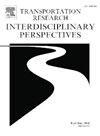基于实时更新数据的高分辨率公交车道性能评估
IF 3.9
Q2 TRANSPORTATION
Transportation Research Interdisciplinary Perspectives
Pub Date : 2025-06-16
DOI:10.1016/j.trip.2025.101473
引用次数: 0
摘要
公共汽车优先措施,如公共汽车专用道,旨在提高公共汽车的性能和增加乘客。传统上,效益是在总体水平上进行评估的。然而,较新的数据源能够跟踪微延迟及其与详细总线优先级数据的关系。考虑到公交车优先级措施的时间表调整,我们预计对线路段级别的预期延误的影响最小,主要的好处是相对于时间表减少了延误的可变性。本研究分析实际巴士到达数据,以检验停停路线特性对边际延误的影响。该分析使用集合效应、间效应和内效应面板回归模型来预测在30个到站的滚动窗口内每个站到站段的边际延误的平均值和标准差。自变量包括优先级措施、交通信号、交通量、计划出行时间、停车到停车路段长度、计划出行速度、交叉路口、降水、周末、节假日和COVID紧缩指数。结果表明,公交-出租车专用道和公交- hov专用道每公里可减少6-7秒的边际延迟。虽然由于调度调整,对边际延误的直接影响很小,但这些车道显著降低了延误的可变性,每公里延误的标准差节省了5-20秒。该研究还强调了交通信号和交叉路口对公交车性能可靠性的重大影响。这些发现支持巴士优先措施在提高巴士服务可靠性方面的有效性。本文章由计算机程序翻译,如有差异,请以英文原文为准。
High resolution bus lane performance evaluation from real time update data
Bus priority measures such as bus lanes are designed to enhance bus performance and increase ridership. Traditionally, benefits have been evaluated at an aggregate level. Newer data sources, however, enable the tracking of micro delays and their relation to detailed bus priority data. Given schedule adjustments for bus priority measures, we anticipate minimal impacts on expected delay at the route-segment level, with the primary benefit being reduced delay variability relative to the schedule.
This study analyzes real bus arrival data to examine the impact of stop-to-stop route characteristics on marginal delay. The analysis uses pooled, between-, and within- effects panel regression models to predict average and standard deviation of marginal delay for each stop-to-stop segment within rolling windows of 30 arrivals. Independent variables include priority measures, traffic signals, traffic volumes, scheduled travel time, stop-to-stop link length, scheduled travel speed, cross-traffic turns, precipitation, weekends, holidays, and the COVID stringency index.
Findings reveal that bus-taxi lanes and bus-HOV lanes reduce marginal delay by 6–7 s per kilometer. While the direct impact on marginal delay is minimal due to schedule adjustments, these lanes significantly reduce the variability of delay, saving 5–20 s of standard deviation of delay per kilometer. The study also highlights the substantial impact of traffic signals and cross-traffic turns on bus performance reliability. These findings support the effectiveness of bus priority measures in improving bus service reliability.
求助全文
通过发布文献求助,成功后即可免费获取论文全文。
去求助
来源期刊

Transportation Research Interdisciplinary Perspectives
Engineering-Automotive Engineering
CiteScore
12.90
自引率
0.00%
发文量
185
审稿时长
22 weeks
 求助内容:
求助内容: 应助结果提醒方式:
应助结果提醒方式:


